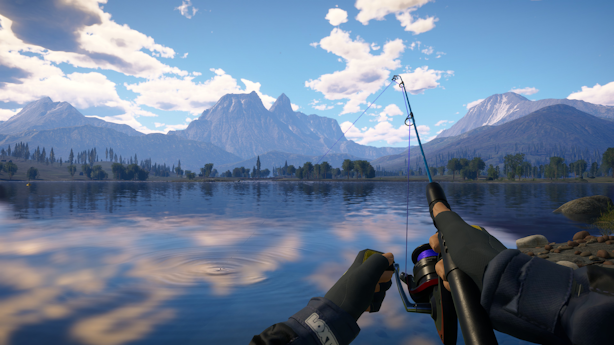Angling isn’t just a sport, it’s an art form.
Just like in the real world, each species has its personality and preferences. In this fish identification guide to Golden Ridge Reserve, you’ll find information about each species' habitats and traits, as well as suggested choices for bait and lures.
You can also read about each fish in your in-game Handbook, which is easily accessible via the menu.

Happy fishing, and be sure to share your best catches using the hashtag #COTWTheAngler on social media!
Fish Traits
Traits are behavioral indicators you can use to discover when each species might be most active and how they will react once you've managed to get one hooked. A good Angler also considers this information when choosing their gear and where to fish.
Aggressive: Goes directly for a strike without nibbling.
Bottom Lurker: Prefers swimming closer to the bottom.
Easily Spooked: Gets easily scared by human presence.
Hard Fighter: Tries its best to get off the hook.
Jumper: Likes jumping out of the water.
Keen Senses: Can sense food from a great distance and will respond well to lures.
Last stand: When close to getting caught it fights with renewed vigor.
Night Owl: More active at night.
Sun Lover: More active after the sun rises.
Species
There are 12 species inhabiting Golden Ridge Reserve: Bluegill, Channel Catfish, Golden Trout, Kokanee Salmon, Lake Trout, Largemouth Bass, Mountain Whitefish, Northern Pike, Rainbow Trout, Sauger, Smallmouth Bass, and Yellow Perch.
Read on for information about each fish species inhabiting the lakes and waterbodies of Golden Ridge Reserve.
Bluegill
The Bluegill is an omnivorous species of freshwater fish native to North America and lives in streams, rivers, lakes, and ponds. They mostly feed on small aquatic insects and fish, though suffice it to say, they will eat anything they can fit in their mouth. If food is scarce, Bluegill will also feed on aquatic vegetation and algae; they’ll even feed on their eggs or offspring if the situation is dire enough.
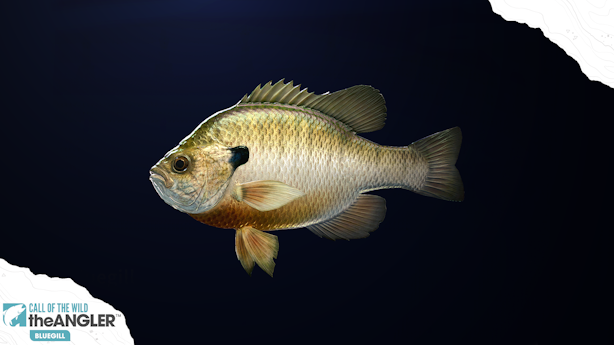
Habitats
Shallow Pond, Lake Shore, Shallow Lake
Bait and Lure Preferences
Bread, Pearl Barley, Dough
Traits
Bottom Lurker, Jumper
Channel Catfish
The Channel Catfish is North America's most numerous catfish species, and possess very keen senses of smell and taste which allows them to find food in dark, stained, or muddy water with relative ease.
Channel Catfish are omnivores and can be seen eating snails, clams, crustaceans, snakes, frogs, small fish, insects, aquatic plants, algae, seeds, grains, nuts, and even small birds and mammals on occasion.
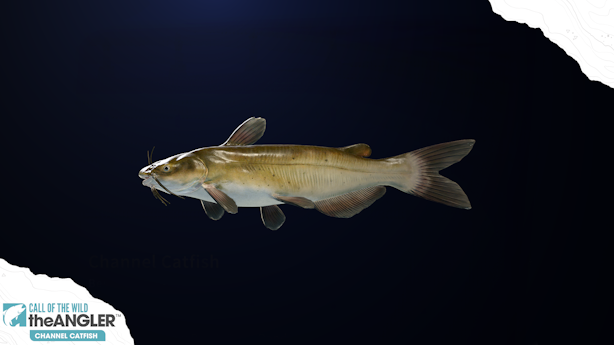
Habitats
Shallow Pond, Deep Pond, Lake Shore
Bait and Lure Preferences
Bread, Pearl Barley, Dough
Traits
Bottom Lurker, Keen Senses, Night Owl
Golden Trout
The Golden Trout is a species of Trout native to California. In their native habitat, adults range from 6-12 inches/15-30 centimeters in length. Fish over 12 inches/30 centimeters are considered large, and the max recorded weight of transplanted Golden Trout is 11 pounds/5 kilograms.
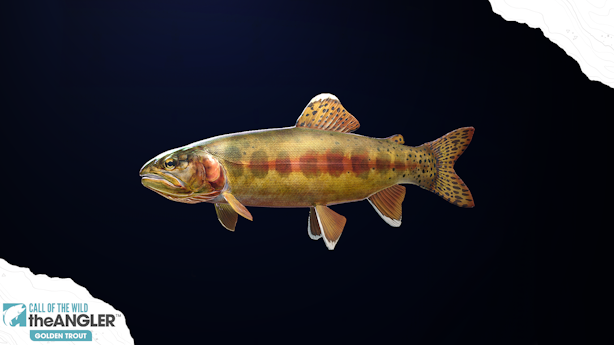
Habitats
Shallow Pond, Deep Pond, Lake Shore
Bait and Lure Preferences
Marshmallow, Cheese, Eggs
Traits
Easily Spooked, Jumper, Last Stand
Kokanee Salmon
The Kokanee Salmon is the non-anadromous form of the Sockeye Salmon. While the size range of Kokanee is often lake-specific and depends on many factors, in typical populations the Kokanee grows to an average size of 9-12 inches/23-30 centimeters; the average weight is 1 pound/half a kilogram.
Kokanee Salmon are very sensitive to water temperatures, and cannot survive in non-optimal temperatures. Because their regular food is so small, the general understanding of angling for Kokanee is to irritate the fish enough so that it strikes your lure out of anger rather than as a predator.
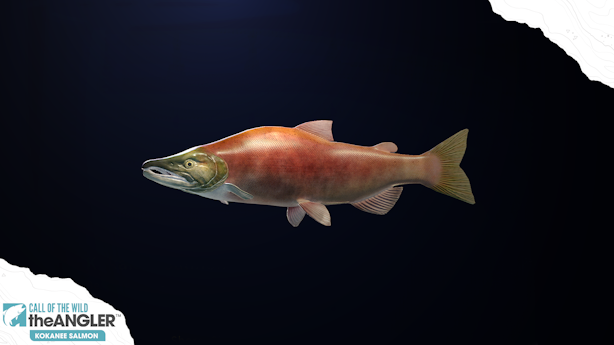
Habitats
Lake Shore, Shallow Lake, Deep Lake
Bait and Lure Preferences
Crankbait, Jerkbait, Grub
Traits
Aggressive, Hard Fighter, Jumper
Lake Trout
The Lake Trout is a freshwater char living mainly in lakes in northern North America. It is the largest of the chars and is prized both as game fish and as food fish. The average length of a Lake Trout is anywhere between 24–36 inches/61-91 centimeters, and a weight between 15–40 pounds/7-18 kilograms is not uncommon.
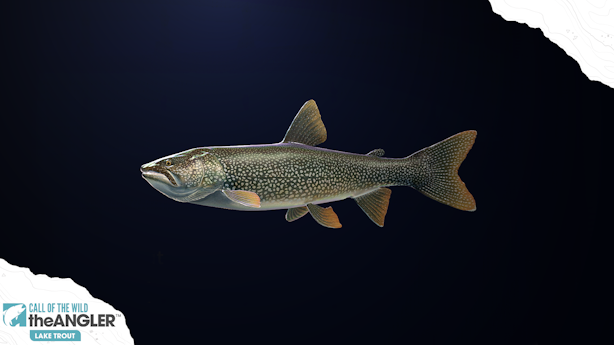
Habitats
Deep Pond, Shallow Lake, Deep Lake
Bait and Lure Preferences
Liver, Eggs, Redworm
Traits
Bottom Lurker, Hard Fighter
Largemouth Bass
The Largemouth Bass is a freshwater gamefish native to the eastern and central United States, southeastern Canada, and northern Mexico, and is a highly sought-after angling fish, boasting a high-octane exciting 'fight', with fish often becoming airborne to try and throw the hook.
Largemouth Bass have an average lifespan of 10 to 16 years and can reach a maximum recorded overall length of 29.5 inches/74.93 centimeters and a maximum unofficial weight of 25 pounds 1 ounce/11.4 kilograms.
The juvenile Largemouth Bass consumes mostly small bait fish, scuds, water fleas, copepods, small shrimp, and insects. Adults consume smaller fish, shad, worms, snails, crayfish, frogs, snakes, salamanders, bats, and even small water birds, mammals, turtle hatchlings, and alligator hatchlings; prey items can be as large as 50% of the bass's body length or more.
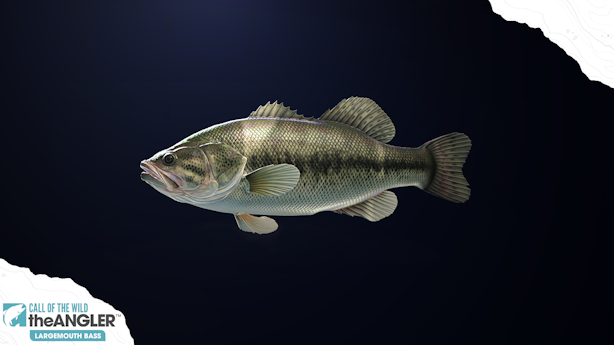
Habitats
Lake Shore, Shallow Lake, Deep Lake
Bait and Lure Preferences
Redworm, Leeches, Minnow
Traits
Aggressive, Jumper, Last Stand
Mountain Whitefish
The Mountain Whitefish is a widely distributed salmonid fish of western North America, inhabiting mountain streams and lakes, favoring clear cold water and large deep pools of at least three feet.
Mountain Whitefish are bottom feeders, stirring up the substrate with pectoral and tail fins to expose insect larvae and other invertebrates, including snails, crayfish, and amphipods. Their main feeding time is in the evening, but they will also take drifting prey during the day. The Mountain Whitefish frequently feeds in the lower strata of streams, but populations may rise to the surface to prey on hatching insects, including mayflies.
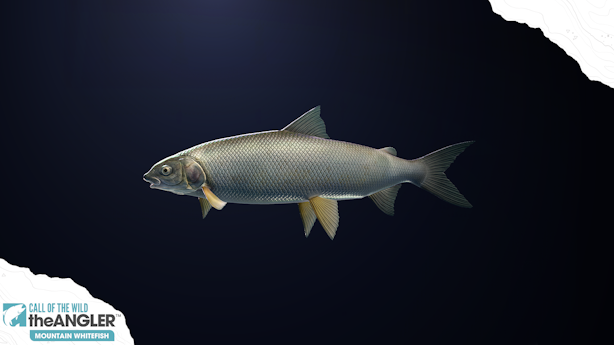
Habitats
Shallow Pond, Deep Pond, Lake Shore
Bait and Lure Preferences
Bread, Pearl Barley, Eggs
Traits
Bottom Lurker, Hard Fighter, Night Owl
Northern Pike
Named after its resemblance to polearms, the Northern Pike is a species of carnivorous fish of the genus Esox and is generally known as a 'sporting' quarry, with aggressive hits and aerial acrobatics. Pike can grow to a relatively large size: the average length is 16-22 inches/41-56 centimeters, with a maximum recorded length of up to 69 inches/175 centimeters and a published weight of 65 pounds/29 kilograms.

Habitats
Deep Pond, Lake Shore, Shallow Lake
Bait and Lure Preferences
Redworm, Leeches, Minnow
Traits
Aggressive, Jumper, Last Stand
Rainbow Trout
The Rainbow Trout is a highly-regarded game fish native to cold-water tributaries of the Pacific Ocean in Asia and North America and is considered the hardest-fighting Trout species by many. Adult freshwater stream Rainbow Trout averages between 1 and 5 pounds/450 grams and 2.3 kilograms, while lake-dwelling and anadromous forms may reach 20 pounds/9 kilograms.
Coloration varies widely based on subspecies, forms, and habitats. Adult fish are distinguished by a broad reddish stripe along the lateral line, from the gills to the tail, which is most vivid in breeding males. Rainbow Trout are predators with a varied diet and will eat nearly anything they can capture. Rainbow Trout, including juvenile steelhead in fresh water, routinely feed on larval, pupal, and adult forms of aquatic insects. They also eat fish eggs and adult forms of terrestrial insects that fall into the water.
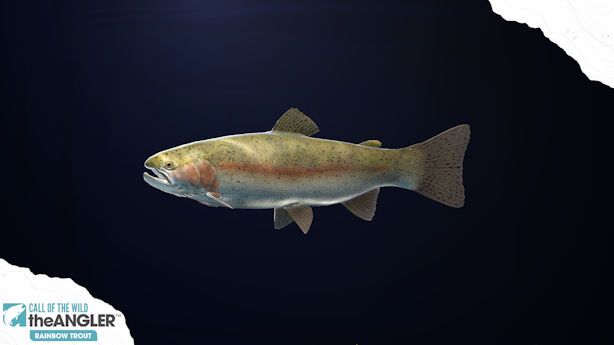
Habitats
Deep Pond, Lake Shore, Upstream
Bait and Lure Preferences
Bread, Pearl Barley, Dough
Traits
Easily Spooked, Jumper, Last Stand
Sauger
The Sauger is a freshwater fish that resembles its close relative, the Walleye. The typical Sauger is 11-14 ounces/300-400 grams in weight and requires warmer summer water temperatures of 68-83 degrees Fahrenheit/20-28 degrees Celcius.
Saugers feed on a variety of invertebrates and small fish depending on their size and the time of year. Though more likely to be found in large rivers with deep pools, they can be encountered in a variety of habitats because of their migratory tendencies.
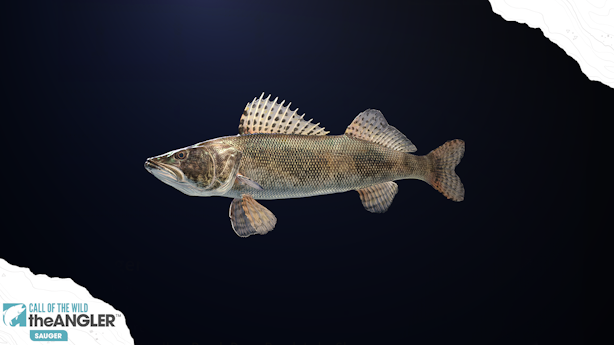
Habitats
Shallow Pond, Deep Pond, Lake Shore
Bait and Lure Preferences
Redworm, Leeches, Minnow
Traits
Aggressive, Hard Fighter, Night Owl
Smallmouth Bass
The Smallmouth Bass is a species of freshwater gamefish sought by anglers throughout the temperate zones of North America. They have been seen eating tadpoles, fish, aquatic insects, and crayfish.
Smallmouth Bass are highly sought-after and frequently fished by anglers using conventional spinning and bait casting, as well as fly fishing. The Smallmouth Bass is potentially the toughest fighting freshwater fish in North America and is commonly the targeted species in many freshwater fishing tournaments.
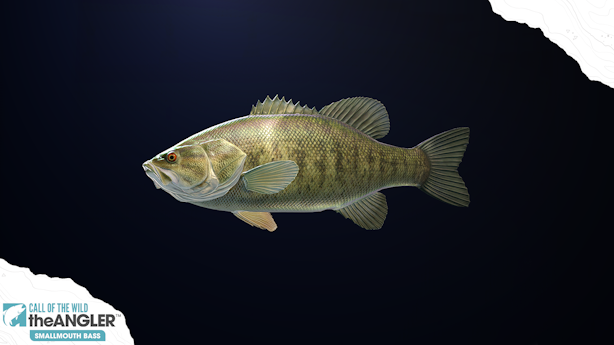
Habitats
Lake Shore, Shallow Lake, Upstream
Bait and Lure Preferences
Eggs, Redworm, Leeches
Traits
Aggressive, Hard Fighter, Jumper, Last Stand
Yellow Perch
The Yellow Perch is a freshwater fish native to much of North America and is often recognized by its dark, vertical stripes, and gold or yellow body color. The maximum recorded total length is 20 inches/50.8 centimeters although they are more commonly around 7.5 inches/19 centimeters; the maximum published weight is 4.2 pounds/1.9 kilograms.
Yellow Perch are a popular sport fish, prized by both recreational anglers and commercial fishermen for their delicious, mild flavor. The voracious feeding habits of Yellow Perch make them fairly easy to catch when schools are located, and they are frequently caught by recreational anglers targeting other species.
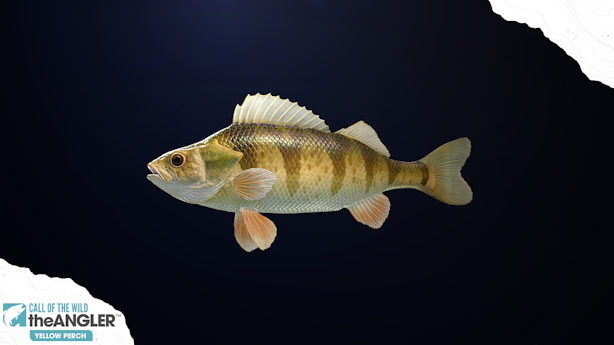
Habitats
Shallow Pond, Deep Pond, Lake Shore
Bait and Lure Preferences
Redworm, Bloodworm, Leeches
Traits
Bottom Lurker, Sun Lover
About the Author
This content was made by the fine people at Expansive Worlds, a creative division of the globally renowned Swedish games development company, Avalanche Studios Group. Stay up to date with all things The Angler and interact with our growing and passionate community by following us on social media!






